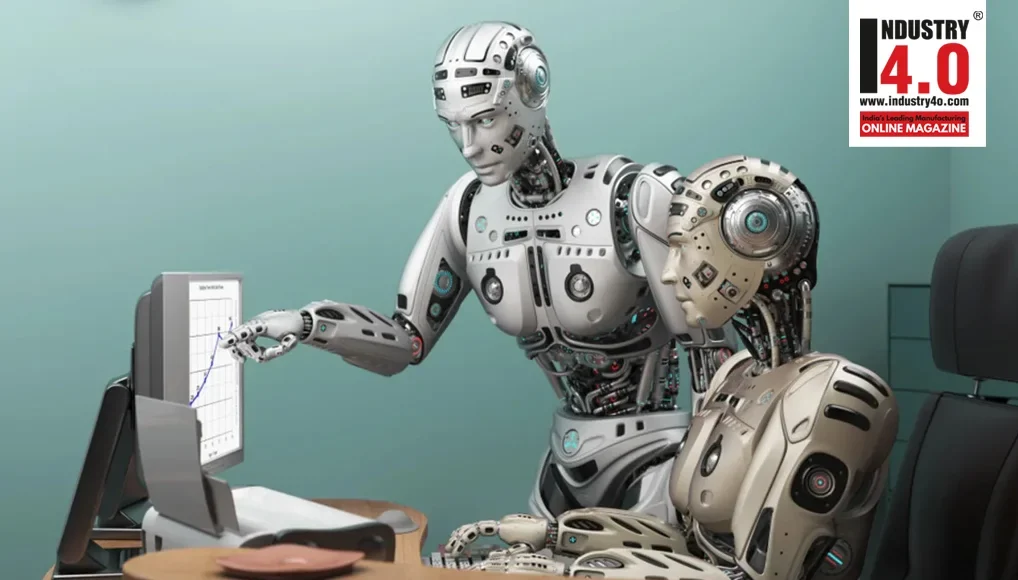NSF’s Future Manufacturing program is looking to revolutionize the industry by supporting research to enable new manufacturing capabilities.

If it ain’t broke, don’t fix it.
Everyone has heard that old saying. And in many instances, it makes sense. If we’re talking about your dog’s leash, or your basement ping pong table – this old idiom is a sensical way to maximize value out of your investments. But in the modern world of manufacturing, “If it ain’t broke, don’t fix it” isn’t going to cut it.
Manufacturing isn’t broken, but you better believe the future of the industry won’t remain the same as it is today just because of that. There’s always something to fix, improve, enhance, augment, automate, elevate, innovate, or escalate.
Why does any person or business get into manufacturing? To make a product, fill a need, and make money. Creating better products, improving margins and implementing speedier processes is the primary objective, both now and in the future. The future of manufacturing is dependent upon the efforts of those looking to change the game. And we are at an inflection point in the industry where upgrades are occurring rapidly, and those not ready to adapt will likely fade away. Because of this natural trajectory, the National Science Foundation has created a research grant for manufacturing. This grant ensures the top thinkers in the industry gain access to the capital needed to develop tools which ensure the primary function of manufacturing; creating better products, speedier processes, and improved margins.
The National Science Foundation is an independent federal agency dedicated to promoting the progress of science through many mediums – one of which is manufacturing. By securing grant money, the NSF advances basic research and innovation across industries and transforms the future.
What is Future Manufacturing?
This is how the NSF views the Future Manufacturing program: “The goal of Future Manufacturing is to support fundamental research and education of a future workforce to overcome scientific, technological, educational, economic and social barriers in order to enable new manufacturing capabilities that do not exist today.”
They are not shy about their goal: to change the game.
The National Science manufacturing program recognizes that the current generation of manufacturing has evolved in recent decades, but will soon undergo another massive evolution, and they want American leaders to be ready. As it stands today, the manufacturing ecosystem across the globe is driven by technological forces and globalization. Competition in manufacturing has, in the last few decades, been decided by the maturation, commoditization, and widespread utilization of computation and logistics. This emphasis on new technologies and the supply chain has made great strides in leveling the technological playing field. But, it places a premium on low wages and steadily improved technology. That’s all about to change.
The future generation (which is closer than it is farther) of technological competition in manufacturing is going to emphasize computation in order to: provide trustworthy translation of product designs to manufacturing plans, affect the controls over ensuring those plans result in products that meet specifications, as well as the creation of new tools. The strategy for American leadership in Manufacturing is to, “… require new materials, devices, systems, processes, machines, design methods, social structures, and business practices” throughout the industry and beyond.
Translation: we need an influx of skilled workers and new tools to carry out the exponential increase in technological innovations that is currently revolutionizing the manufacturing industry.
As an industry, we’re on the brink of lighting up every dark area of a manufacturing process through the implementation and integration of advanced technology which provides broader, better, deeper real-time data and connection. Consistently innovating your business’ technological manufacturing processes is rapidly becoming a standard operating procedure – resulting in better products, better processes and better results while enhancing sustainability, human relations, and profit.
Because of this awareness, the NFS seeks and is accepting “proposals to perform fundamental research to enable new manufacturing capabilities.”
NFS will support winning proposals in the Future Manufacturing program with one of two awards. First, the Future Manufacturing Research Grants (FMRG) will award up to $3 million for up to four years. Second, the Future Manufacturing Seed Grants (FMSG) will award up to $500,000 for up to two years. There are no restrictions on the number of proposals an organization can submit. The NFS estimates a total of $32,000,000 worth of funding for Future Manufacturing.
 Future Manufacturing Research Grants (FMRG)
Future Manufacturing Research Grants (FMRG)
This grant will support “fundamental, multidisciplinary, and integrative research and education” in the following crucial arenas: future cyber manufacturing research, future eco manufacturing research, and future biomanufacturing research. Starting in 2021, up to 8 Future Manufacturing Research Grants will be awarded for up to four years as a Standard Grant or a Continuing Grant.
This award is clearly outlined for a team and is not eligible for unaffiliated individuals. The NFS will support a team of high thinkers with a $3 million research grant in order to provide support for necessary costs like the collective research needs (materials, access, travel, etc.) and education – all with the ultimate goal of groundbreaking new manufacturing processes.
Future Manufacturing Seed Grants (FMSG)
This grant will support “fundamental research and education…through multidisciplinary team building, the development of fundamental research concepts, and the initiation of research and educational activities” in the following crucial arenas: future cyber manufacturing research, future eco manufacturing research, and future biomanufacturing research. Starting in 2021, up to 17 Future Manufacturing Seed Grants will be awarded for up to four years as a Standard Grant or a Continuing Grant.
This award is outlined to highlight an effort that results in methods to empower a new workforce. Although a variety of activities may be proposed for a FMSG, the NFS makes it clear that, “Prototypes of educational activities that focus on the skilled technical workforce and involve two-year institutions are particularly encouraged.”
What Types of Research Does Future Manufacturing Support?
In order to overcome the educational, scientific, social, technological and economical barriers in manufacturing today, fundamental research and the education of a future workforce are necessary. Future Manufacturing solicitation supports these efforts by dedicating funding for those who meet the requirements. The results of this effort will be new manufacturing capabilities that do not exist today. These will look like: the formation of new organizational structures and industries, business models, new capabilities across an increased array of producers, an increased competitiveness from the United States in development and production, economic growth, and education of the future workforce and leaders of the manufacturing industry. Research will be awarded upon and conducted in three key ‘thrust areas’ – future cyber manufacturing, future eco manufacturing, and future biomanufacturing as well as the networks that could encompass any and all of those areas.
The grants offered by the NSF through Future Manufacturing are focused on the following arenas:
Cyber Manufacturing
Aimed at the convergence of computing and manufacturing, future cyber manufacturing capitalizes on research opportunities that will radically transform manufacturing concepts. Breakthroughs in predictive analytics, machine learning, wireless communication, automation, artificial intelligence, cyber-physical-human systems, 3D printing, industrial IoT, and computing systems of the fourth industrial revolution provide important incentives to reconceptualize what it means to operate in manufacturing.
Cyber manufacturing provides customization, democratization or access to platforms, security, algorithms, modeling, analytics and more to almost every industry in manufacturing. By acting as a service, cyber manufacturing can meet a business right where it is with opportunities like AI-inspired manufacturing of quantum material architectures, modular construction assisted by robots, or bioinspired swarm manufacturing.
Eco Manufacturing
Enabling holistic processes to encompass a manufacturing products’ material lifestyle as well as account for environmental impact, cost effectiveness and energy consumption. Eco manufacturing provides processes like recycling, circular economy, reprocessing, bio mechanisms and efficiency platforms. The big takeaway? As the NSF puts it, “Fundamental research could enable manufacturing processes that are designed from the start to produce products that degrade naturally or on cue, or can be repurposed without harmful byproducts and without reliance on technologies that are potentially harmful to the environment and society at large.” That’s powerful stuff. If there’s been a stressing point of manufacturing’s impact on the world at large, it’s been negligence of the impact that products and processes have on our Earth. That’s why the NSF implemented this area of research – to ease the burden we are placing on the natural processes around us.
Biomanufacturing
Biomanufacturing research relates mostly to integrated biological processes and proteins. Biomanufacturing provides cell-free or customizable proteins through robust, connected or scalable processes with the intent of enhancing human life. Examples of biomanufacturing include generating functional materials in cells to regrow nerves or tissues, and mass production of extracellular vesicles for therapeutic delivery. The NFS describes the importance of biomanufacturing like this, “In addition, the seamless integration of new biological knowledge with manufacturing technology during product and process development may overcome long standing barriers to scalability of new types of biomanufacturing platforms.” This is the cutting-edge manufacturing technology that will drive us into future prosperity.
Networks
This relates mostly to the tools and systems in place to enhance the potential for the above manufacturing sectors. Examples of an innovative network in manufacturing would be the rapid scaling of production for crisis response (think: immediate response to the need for facemasks, all of the sudden). With interconnectivity not just on the rise but almost as a mandatory operating procedure, the networks of industry will play a crucial role in filling needs for consumers. Research in this area will radically rethink where and how manufacturing occurs. Meeting the manufacturer at the very edge will allow business to adapt like never before while updating any others in the network, as needed. We’re as connected as we’ve ever been, but the networks created from this research will take us to an entirely new level.
How Will Research Impact the Future of Manufacturing?
The opportunities of modern manufacturing didn’t just get invented. Everything that’s revolutionizing the industry today are products and operations that became practical after years and years of think tanks, experimentation and most importantly – research. So if you can take that line of thought and apply it to what manufacturing will look like in 20 years, what are you doing today to prepare for that reality? The actions taken today to better your organizations’ research into revolutionary tech, better employees who understand advanced computation, and a maximally efficient process to streamline your value chain will be the actions that make you a relevant player in the coming decades.
Take the Internet of Things, for example. This advanced manufacturing trend presents some of the most visible, real-time changes in supply chain management and beyond. It took a lot of research before it became the hot topic that it is today. We’re in 2021 and we are seeing the first proven efforts of IoT just recently. It’s awesome the connectivity that this technology brings manufacturers. But what you might not know is that the manufacturing industry spent $183 billion on IoT in 2017. Estimates place that spending north of $300 billion come 2023. The point is: these numbers didn’t just crop up all of the sudden. Industries, like automotive manufacturers, have been researching the capabilities of interconnected, live-data devices for close to a decade if not more by now. The research you didn’t read about in 2013, 2014, etc. is what set up this possibility of revolution and digitization in the industry. Research is vital to the future of manufacturing.
New industries entirely can be the result of research supported through Future Manufacturing and the NFS. Industries that exist in the dark spots of the manufacturing process, just waiting to be found and capitalized upon. But to find them, we need skilled minds dedicated to researching the industry’s practices. New organization structures are needed to pave paths that encourage broader participation in manufacturing education and leadership. As we’ve discussed here, as well as in our blog post titled “Factory of the Future,” manufacturers absolutely need an influx of skilled technical labor. The grants provided through Future Manufacturing explicitly are seeking out new manufacturing capabilities, mitigation of U.S. manufacturing migration, as well as new tools and products (think: 3D printing applications a.k.a. additive manufacturing); but the seed grants in particular are encouraging new social structures, educational access and standards, and opportunities for individuals of any and all backgrounds to enter the industry of manufacturing.
For these necessary evolutions in manufacturing, we need knowledge. Knowledge comes from research.
How Do I Participate in a Research Grant?
It may be too late to get in on the action, seeing as proposals for Future Manufacturing close May 14, 2021. Not to worry, this certainly isn’t the only monetary award floating around for the manufacturing industry. Your higher education institution likely has government-funded research grants available, and they also come available through research-based organizations. Industry partnerships are encouraged, particularly for this type of research.
If you are in a position to partner with an entity in the industry, a GOALI proposal is an excellent option. GOALI proposals seek to build a bridge between academic institutions and industry with the goal of better aligning both parties’ efforts and goals to avoid wasted energy and money. With a GOALI proposal, academic professionals (scientists, engineers, etc.) request funding in conjunction with a standard proposal submission, or as a supplemental funding request to an existing award from the NSF. GOALI isn’t a stand-alone program, but one in accordance with NSF-awards like Future Manufacturing.
If you’re at an education institution, ask questions. Often, your college operates proposal teams to assist specifically with this kind of work. They are a huge lifeline with the nitty-gritty minutia of grant proposals. If you’re with an industry organization, we recommend that manufacturing companies partner with an academic institution. By working with the people who are structuring the education systems and research that will fill your future employment gaps – you’re able to ensure the educational path maintains alignment with industry standards. Whichever entity you are with, this proposal samples page will be a major resource for you.
The NSF announced in October 2020 that it will be awarding more than $40 million in manufacturing grants to 44 institutions across 18 states.
Propel on the Future of Manufacturing
By now, hopefully we’ve impressed upon you the importance of technology in the world of manufacturing, especially where we’re going. But what may be just as important as that technology, is the research behind it. In order to accurately assess the future of manufacturing processes, research is necessary. Which is why it’s an excellent sign that the U.S. government is incentivizing and supporting new pathways in U.S. manufacturing. It hammers home the importance of manufacturing in this country.
The next normal is built today. For a while, the impending technological revolution was a trend, something to dream about and think through. But no longer. It’s here. Smart manufacturing, the industrial revolution, Industry 4.0, the future, whatever you want to call it – it’s being used across the globe and right in your backyard as we speak. The hype is no longer just hype, but rather, proven and profitable. How manufacturers handle the next few years of their operations depends squarely on how they act right now. What side of the coin are you on?
Building value chains that are resilient, adaptive and exponentially innovative is not an easy task. It doesn’t happen after a couple meetings. It is something a company must commit to, and carry out with emphasis.
Take a peek at our modern manufacturing report. It will help you get a finger on the pulse of global manufacturing, new products here in the United States, smart factories, prototyping, and the next generation of manufacturing knowledge as well as an in-depth view at the specific technologies that are on the brink of widespread adoption. Understanding global trade initiatives, adapting cloud-based technologies, investing in the future workforce, and mitigating high-cost, low-value operations through advanced manufacturing is the future. But it’s also the present. So, let’s get to work and build your better tomorrow, right now.
For Further Details Contact
Mr. DAVID SIDES
Outreach Director
E-mail : [email protected]
website : www.propelplm.com
LinkedIn : https://www.linkedin.com/company/propelplm/
Twitter : https://twitter.com/propelPLM









